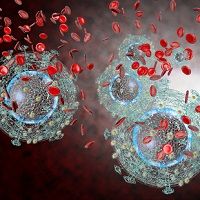HIV Causing Diminished Physical Function for Elderly Americans
As the average age of HIV patients has risen, difficulties in physical abilities compared to the norm have become a new obstacle.

Even after viral suppression is achieved, patients with HIV are aging more quickly than their peers without the disease, according to a small cohort study conducted in North Carolina.
Members of this group controlled their HIV with medication, but were less likely to be physically independent at age 90, the study reported.
“While these individuals are surviving into old age, they may, however be experiencing ‘accelerated aging’ with greater declines in physical function that than observed among comparatively matched individuals free of HIV,” wrote corresponding author Mehri S. McKellar MD, associate professor of medicine at the Duke University School of Medicine, and co-authors.
The researchers had two prime suspects for the cause of this relative decline among the HIV patients they studied: anti-retroviral therapy (ART) and the count of cells infected with HIV. However, they found no correlation between ART or the immunosuppression of the HIV viral load. At this point, the cause “remains uncertain”, the study said.
The degree of difference between the HIV group and the HIV-free controls raises issues about increased health costs among the HIV population because of poorer health, greater disability, more medical visits and surgeries, and longer hospital stays, the study added. In 2015, it was estimated that more than half of the people in the U.S. with HIV were 50 years old and older.
“This emphasizes the importance of finding appropriate intervention strategies and warrants additional research regarding the mechanisms of decline,” the co-authors wrote.
Some other candidates for causing the accelerated aging of these HIV patients were higher rates of co-morbidities, smoking, chronic inflammation from the HIV infection and underlying immunosuppression, and/or low bone and muscle mass. In the study group, the members’ mean number of these comorbid conditions was 1.4, with cardiovascular disease, liver disease, renal disease, and pulmonary disease among the most frequent. 68% of the study group members were current or former smokers.
The study was based on an assessment of 107 people with HIV seen at the Duke University HIV Clinic in Durham, North Carolina, from 2013-2014. The group was 70% male and 60% African-American, with an average age of 60.3 years old. The members were knowledgeable of their HIV status for an average of 15.3 years. They all were being treated with ART.
Potential participants who had medical conditions that would impede the physical testing were excluded. 4 tests of physical performance were performed as part of the study. The 2.4-meter walk, a predictor of future institutionalization and survival mortality; the 30-second chair stand, to discriminate between fallers and non-fallers; grip strength, which can be predictive of mortality; and the 6-minute walk test, to indicate aerobic capacity.
In general, the test subjects did not do as well as their peers without HIV. For example, in the test group of men aged 60 or older, the mean maximal gate speed was 1.80 m/s compared with the normal 1.93-2.08; grip strength 36.09 kg. compared with 28.0-41.7; and the 6-minute walk distance was 414.45 m compared with 527-572 m.
Limitations of the study included that the test population was geographically limited to the southeastern U.S., North Carolina and Durham, and was predominately black, the study said. However, 44% of the people with HIV live in the Southeast. North Carolina ranks in the top ten states for new HIV infections, and Durham ranks third among all 100 North Carolina counties, the study added.
“The implications of these data are significant for planning long-term HIV management approaches, particularly strategies for preserving physical function and quality of life in older HIV-infected patient populations,” the study concluded.
Diminished physical function in older HIV infected adults in the Southeastern U.S. despite successful antiretroviral therapy, appeared in the June 29 issue of Plos One
Related Content
Aging Getting Tougher for People with HIV